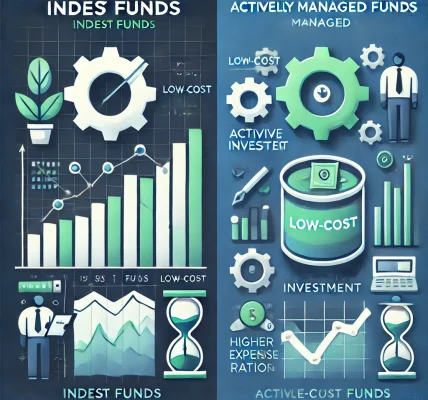Investing in mutual funds is an excellent way to grow your wealth over time. However, achieving consistent returns while minimizing risks requires a well-diversified portfolio. In this blog, we will explore actionable strategies for building a diversified mutual fund portfolio that aligns with your financial goals.
What Is Portfolio Diversification?
Portfolio diversification involves spreading your investments across various asset classes, sectors, and geographies to reduce risk. In mutual funds, diversification helps to ensure that poor performance in one area is offset by gains in another, providing a balanced approach to wealth building.
Why Is Diversification Important?
- Risk Mitigation: Reduces the impact of underperforming investments.
- Stable Returns: Balances high-risk and low-risk investments.
- Capital Preservation: Protects your portfolio during market downturns.
Steps to Build a Diversified Mutual Fund Portfolio
1. Define Your Financial Goals
Identify your investment objectives, such as:
- Short-term goals: Buying a car or funding a vacation.
- Long-term goals: Retirement planning, children’s education, or wealth creation.
Clear goals will help you determine the types of mutual funds to include in your portfolio.
2. Assess Your Risk Appetite
Risk tolerance varies among investors. If you are risk-averse, prioritize debt or balanced funds. For aggressive investors, equity-oriented funds may be a better fit.
3. Choose a Mix of Asset Classes
A diversified portfolio typically includes the following:
- Equity Mutual Funds: For high growth potential. Invest in large-cap, mid-cap, and small-cap funds for exposure to various market segments.
- Debt Mutual Funds: For stable and predictable returns. Options include government bonds, corporate debt, and money market funds.
- Hybrid Funds: These combine equity and debt components, offering balanced risk and reward.
- Sectoral Funds: Allocate a small portion to sector-specific funds for higher returns with calculated risks.
4. Invest in Geographically Diversified Funds
Consider international mutual funds to tap into global markets. This adds geographical diversification to your portfolio and reduces reliance on domestic market performance.
5. Spread Investments Across Time
Use a systematic investment plan (SIP) to invest regularly and benefit from rupee cost averaging. This minimizes the impact of market volatility over time.
Tips for Effective Portfolio Management
1. Review and Rebalance Regularly
Monitor your portfolio periodically to ensure it aligns with your goals and market conditions. Rebalance your investments if any category becomes overexposed.
2. Avoid Over-Diversification
While diversification reduces risk, over-diversification can dilute returns. Stick to 8-12 mutual funds for optimal results.
3. Focus on Quality Funds
Select mutual funds with a proven track record, strong fund management, and consistent performance over different market cycles.
4. Be Tax-Efficient
Invest in funds that offer tax advantages, such as ELSS (Equity Linked Savings Scheme), to maximize post-tax returns.
Conclusion
Building a diversified mutual fund portfolio is essential for long-term financial success. By defining your goals, assessing your risk tolerance, and carefully selecting funds, you can create a robust investment strategy. Regular monitoring and disciplined investing will help you stay on track and achieve your financial dreams.




